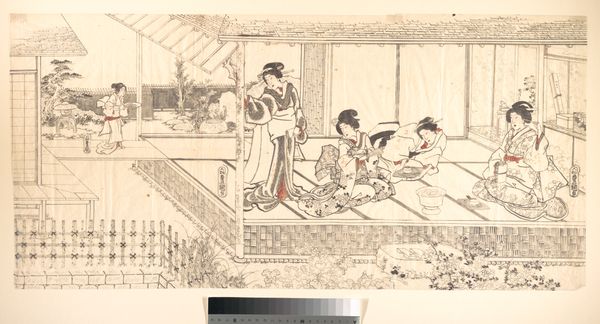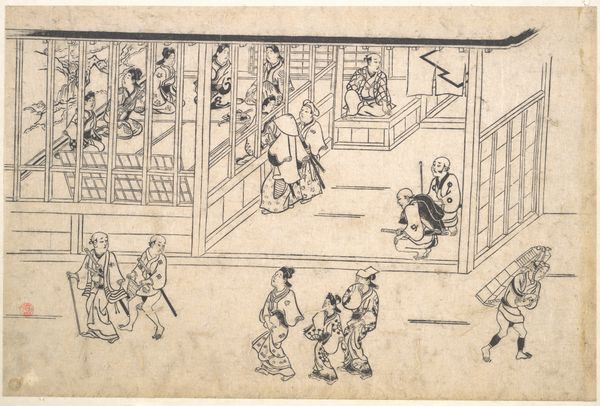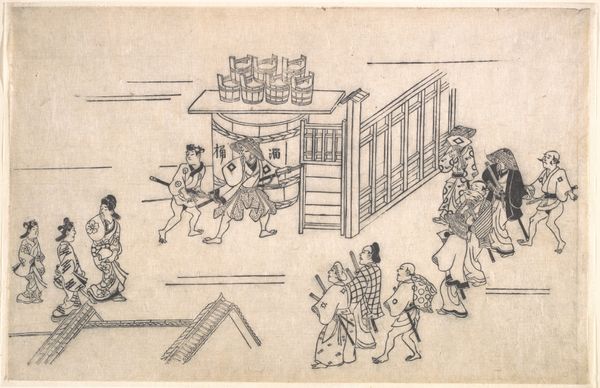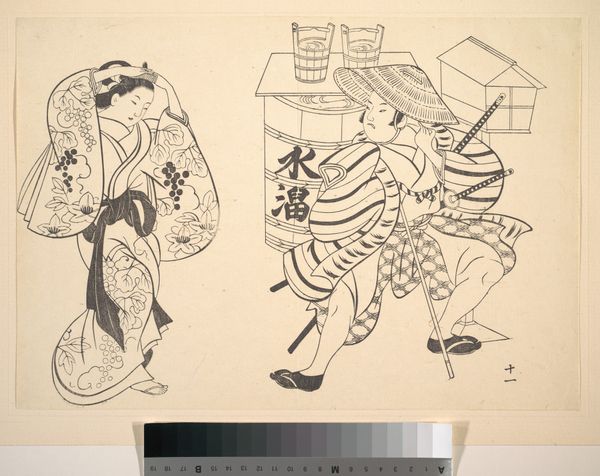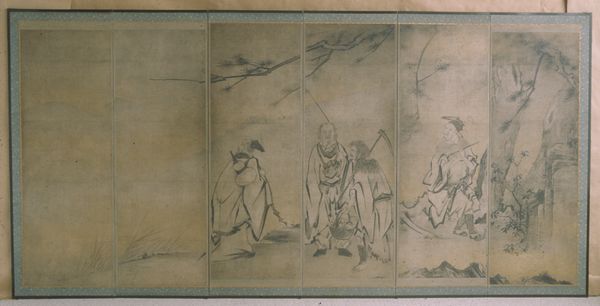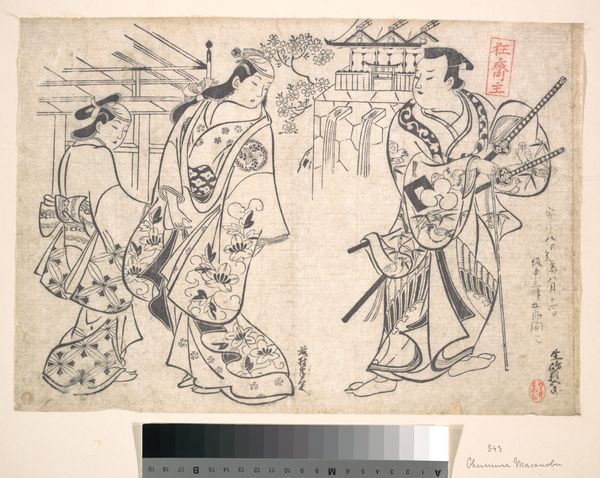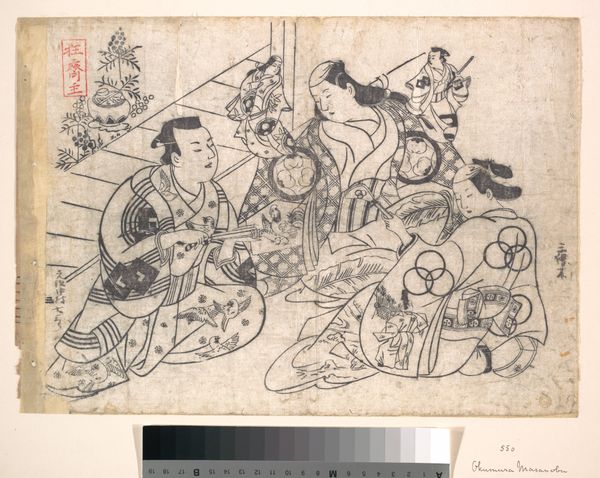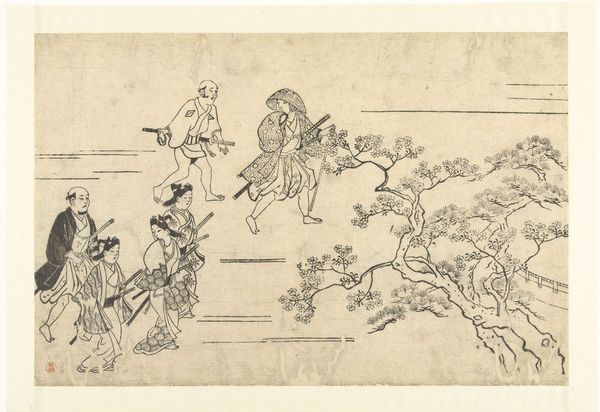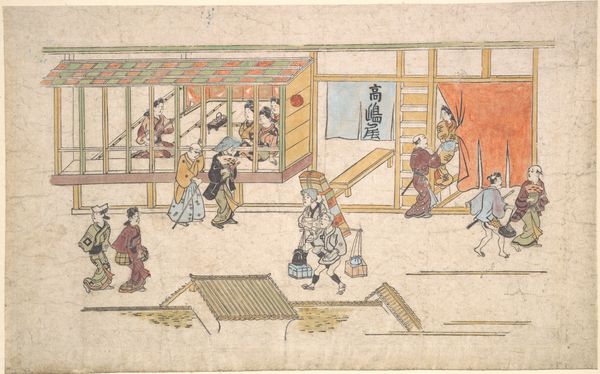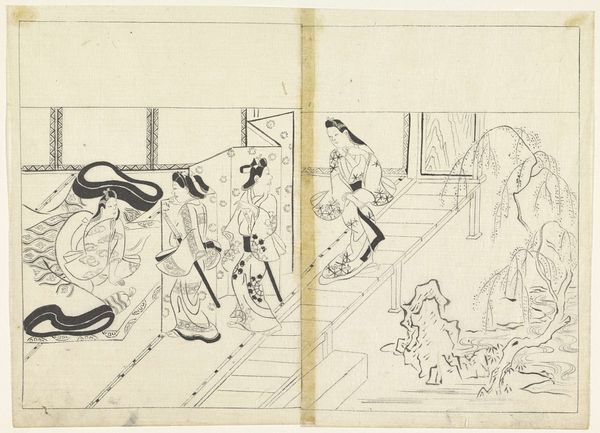
The Twelfth Scene from Scenes of the Pleasure Quarter at Yoshiwara in Edo 1667 - 1699
0:00
0:00
print, woodblock-print
# print
#
asian-art
#
ukiyo-e
#
figuration
#
woodblock-print
#
men
#
line
#
genre-painting
Dimensions: 10 x 15 in. (25.4 x 38.1 cm)
Copyright: Public Domain
Editor: So, this is "The Twelfth Scene from Scenes of the Pleasure Quarter at Yoshiwara in Edo" by Hishikawa Moronobu, sometime between 1667 and 1699. It’s a woodblock print. I’m struck by how this snapshot offers a glimpse into everyday life, but feels meticulously staged, if that makes sense. What do you see in terms of the historical context of this image? Curator: Well, that sense of staging is important. Remember, these pleasure quarters, though often romanticized, were intensely regulated. Moronobu's print doesn't simply depict reality; it presents a curated image for public consumption, or even potentially a form of advertising, shaping perceptions of Yoshiwara. Consider how it carefully constructs a scene of leisure and elegance. What details strike you as intentional choices in this construction? Editor: I suppose the very presence of the men watching from the raised rooms and the continuous parade of beautifully dressed women speaks to that intention. It seems to highlight the quarter as a destination of social display as well as...other things. Curator: Precisely! Think about who the likely audience was for these prints. How would these images have shaped their understanding of class, gender, and the role of entertainment districts in Edo society? Were these prints subversive, reinforcing the status quo, or some combination of both? Editor: That’s fascinating. I hadn't considered the complexity of its social role. I guess I was initially thinking only of artistic skill rather than it being this social commentary! Curator: It's often both, and understanding that interplay between the aesthetic and the social is key to unlocking its full meaning. What questions does the image leave you with now, given our discussion? Editor: It makes me wonder how accurate these portrayals really were. Was this a true representation, or were aspects being deliberately enhanced or omitted? It feels like there are layers upon layers to peel back to better understand Japanese Edo culture! Curator: Exactly. And that continuous process of questioning, that’s what keeps historical inquiry vital.
Comments
No comments
Be the first to comment and join the conversation on the ultimate creative platform.

